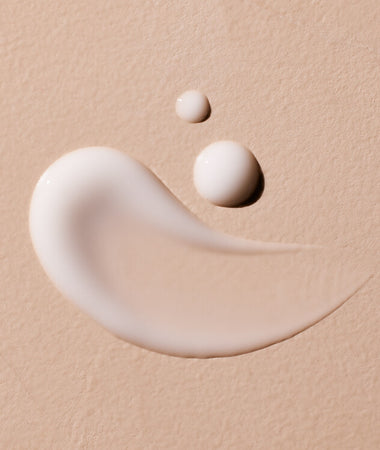
What Is Tandem Nursing And How Does It Work?
You're thrilled that your second baby is due in a few months. But one thing has been weighing heavy on your heart. You're still nursing your toddler, and neither of you is ready to start the weaning process. So what can you do? Tandem nursing may be the perfect solution!
To help you decide if tandem nursing is right for you and your family, let's take a closer look at what it is and how it works.
Table Of Contents
What Is Tandem Nursing?

Tandem nursing is when a woman breastfeeds more than one child at a time. This could be twins or a toddler and a new baby. No matter the combination, it's a beautiful way to provide nutrition for your babies while giving them the closeness and bonding that comes with nursing.
How Tandem Nursing Works
Tandem nursing requires a bit of coordination, but it's not as difficult as it may sound. You'll simply need to position yourself and your children in a way that is comfortable for all of you.
And remember, your nursing journey is unique. Choose what works best for you instead of following a generic plan.
Tandem Nursing Positions

There are several positions to choose from, so experiment and see what works best for you.
One option is to hold one nursling on each side of your body, using your arms or a nursing pillow for support. Then, they can each latch onto the breast closest to them.
Another common position is to place a pillow on your lap and put your new baby on the pillow, facing you. Then, hold your toddler in your arms and position them so they can nurse from the opposite breast.
You can also nurse lying down, which works well for night-time feedings. To do this, simply lie on your side with a pillow behind you for support. Then, place one child on each side of you, and allow them to nurse.
Nursing Order
While breastfeeding both kids at once works for some women, others prefer to feed each one independently. This allows you to focus on the nursing child, which may be necessary if one child is a poor nurser or you're having trouble getting them to latch on.
Since your toddler gets nutrients from food and breastmilk, many women nurse their baby first. That way, they can get a full tummy and continue to grow. Then, once the baby is satisfied, the older child can take a turn.
But if you have a strong let-down, having your toddler nurse first can help prevent your baby from gagging.
Another option If you’re nursing twins is to have your partner or another trusted caregiver offer one baby a bottle while you nurse the other. Then, switch. This works best if you plan to supplement with formula or pump and have milk ready to dump into a bottle.
Breast Order
How do you decide which breast to offer which baby? Let’s look at a few options:
- “Assign” a breast to each one, and they always nurse from that side.
- Alternate which breast you start each little one at.
- Feed both babies on demand on the breast of their choosing.
- Have the baby nurse first and then the toddler nurse on the same side.
Again, there’s no right or wrong solution here. You might start using one of these options and switch to another later. It’s essential to be flexible.
Benefits Of Tandem Nursing

Tandem nursing comes with a host of benefits for both you and your babies.
For starters, it can help ease the transition from one child to two. Getting a new sibling can be a stressful experience for a toddler, but allowing them to nurse alongside the new baby can help alleviate feelings of displacement or jealousy.
Tandem nursing can also help boost your milk supply. Your body naturally produces more milk to meet the needs of both your nurslings.
And since you have two babies sucking, you’re less likely to get clogged ducts or milk blebs. If you feel one coming on, having your toddler nurse on that side can help prevent it from forming.
With an older child and a baby nursing at once, you won’t have to worry about entertaining your toddler while the new one nurses. You can find a comfortable position, get them both latched and enjoy a few moments of peace with your feet up.
Another benefit is that tandem nursing can help streamline the feeding process, especially if you have twins. Once you get the hang of it, it can save you a lot of time.
Finally, tandem nursing can be a bonding experience for everyone involved. Breastfeeding provides comfort and closeness, and tandem nursing gives you the chance to share that with both your children.
Disadvantages Of Tandem Nursing
Though tandem nursing has many benefits, it's not for everyone. Here are a few of the downsides that you need to consider.
First of all, tandem nursing can be physically demanding. You'll be holding two children at once and may need to nurse for long periods. This can leave you feeling tired and drained.
It can also take a toll on your breasts, especially if you're nursing an older child with a mouthful of teeth. In addition, you may experience cracked nipples and other breastfeeding problems, like a clogged duct or mastitis.
(To help, you'll want to keep some Organic Nursing Comfort Balm on hand to soothe your breasts.)
Finally, tandem nursing can be emotionally demanding. You may feel pulled in different directions as you try to meet your children's diverse needs. It can be overwhelming, and you may feel like all you’re ever doing is breastfeeding.
Sometimes, this overwhelm can manifest itself as anger. You may find yourself mad at one of your nurslings or feel a sudden urge to wean your older child.
It's important to remember that these emotions are normal; you aren’t a bad mom. But it is important to get some support to help you through this challenging time. Don’t hesitate to contact a lactation consultant or other professional for advice.
Tips For Breastfeeding Two Children At Once

Tandem nursing isn't easy, but it's doable with a bit of preparation. Here are a few breastfeeding tips to help you get started.
Get Organized Before Delivery Day
Life is about to get a bit crazy, so do as much as you can to prepare before your baby (or babies) arrive. You’ll want to fix a cozy nursing spot in your home and gather the essentials you’ll need so you don’t have to worry about it later.
As you’re preparing, consider investing in a good nursing pillow. It’ll offer support in multiple positions and can be invaluable when nursing two children. If you’re expecting twins, you can purchase special nursing pillows to support your babies while you nurse.
You may also want to get a breast pump and some storage bags so you can pump and store milk for later. This will come in handy if you need to leave your children with a babysitter or if one child is sleeping and the other needs to eat.
Build A Support System
You'll need all the help you can get, so it's essential to have a robust support system in place. Talk to your partner, family, and friends about your plans to tandem nurse, and ask for their help when needed.
It can also help to connect with other tandem nursing moms online or in person. Having support from someone who knows what you're going through can make a big difference.
Prepare Your Older Child
If you're tandem nursing an older child, it's essential to prepare them for the arrival of their new sibling. Talk to them about what to expect and any boundaries you want to set.
For example, you may tell them they can only nurse in the morning and before bed. Or that they can only suckle for a set length of time. You want the breastfeeding relationship to feel good for everyone involved, including you, so don't be afraid to set limits.
Here are a few other tips to help you prepare your toddler:
- During your pregnancy, let them know your milk supply might decrease. The taste could also change as your body works hard at growing a sibling for them.
- Think about what your child will do while you’re delivering and during the initial recovery days. Will you pump milk in advance for them, or will you give them formula (or milk) for a bit?
- Talk about how babies are delicate and need to be treated with care. You don’t want your toddler to try and push your baby off of your boob. You can try practicing with a doll before the baby arrives so you can work on soft touches.
- Try to night wean your toddler before your due date arrives. That way, they’re used to sleeping through the night, and you won’t be woken up by two hungry kiddos who are both ready to eat.
Most of all, remember that this is a significant life change for your toddler. Give them plenty of love and grace. Soon, you’ll all adapt to the new changes and settle into a routine.
Prepare Yourself

Nursing two babies is challenging mentally and physically. Here are a few common struggles you might face.
Toddler Wants To Nurse More
After a new baby joins the family, regression is possible. Your toddler might want to be more like the baby and resort back to breastmilk as their primary source of nutrition.
While this might work for a few days as your toddler adapts, their nutritional needs differ from those of a newborn. You might need to work through some big feelings with your little one and have fun intentionally trying new foods together.
Your Toddler Is Jealous

Jealousy between siblings is common, especially in the early days when your toddler might feel like they got dethroned. They might act out or seek more attention from you.
Try to set aside special one-on-one time with your toddler to combat jealousy. Consider letting them nurse by themselves in the morning or at bedtime. You can also encourage your partner to spend plenty of time with the older child while you’re recovering.
It can also help to talk about all the cool, food-related things your toddler can do that the baby can’t. For instance, they can:
- Dip french fries in ketchup (or carrots in ranch)
- Chew real food
- Tell you their preferences about food
As you chat, validate your child’s feelings to help them feel loved and valued.
You’re Starving
Nursing two babies is an intense job. Your body needs extra calories to keep your supply up and ensure you have the strength to care for your little ones.
If you’re feeling ravenous, try eating more frequently. Instead of three large meals, break it down into five smaller ones. You’ll also want to keep plenty of grab-and-go options on hand.
Here are a few of our favorites:
- Granola bars
- Trail mix
- Yogurt
- Dried fruit
- Energy balls
- Fruit slices
- Hardboiled eggs
- Peanut butter sandwich
Have at least a few shelf-stable products right next to where you nurse so that if hunger strikes, you can easily give your body what it needs.
You Develop A Nursing Aversion
You may have plans to let your older child nurse until they wean themselves. But somewhere on your tandem nursing journey, you might experience a nursing aversion that makes you change your mind.
A nursing aversion is when you feel uncomfortable or agitated when nursing. Hormonal fluctuations, a low milk supply, or being touched out with two kids constantly wanting to nurse can all trigger this feeling.
If it happens, talk to a therapist or lactation consultant who can help you work through things and decide what to do next.
You might wean your older child. Or maybe you’ll implement some of the boundaries we discussed earlier and keep going for a while.
Have Patience
Tandem nursing takes time and practice. Don't be discouraged if it's difficult at first. You’re learning how to balance the needs of two different eaters.
This means you have to be mindful of each one’s:
- Appetite
- Hydration levels
- Nutritional needs
- Intake of other food
- Feelings
No wonder it feels hard; that’s a lot to juggle. Try taking it one day at a time, and trust that you'll soon figure it out.
With a little patience, you'll be a tandem nursing pro in no time!
Tips For Tandem Nursing Twins

Most of the advice above was for nursing a toddler and a newborn. But what about tandem nursing twins, when both of your babies depend on you for all of their food?
Here are a few tips to make nursing twins a successful and positive experience.
- Ask for help. Those early days can be brutal. You’re trying to figure out where to put each baby and where to put your hands for optimal support. An extra set of hands to help you get settled can make all the difference.
- Don’t try to walk around. When nursing one baby, you can sometimes walk around during feedings. If you try to do this with two babies, the results can be disastrous. Instead, settle down somewhere comfy.
- Experiment. Try different positions and pillows to see what feels best. And don’t be afraid to mix it up, especially as your twins grow and can support themselves more.
- Try nursing one baby at a time. If you’re struggling to get your babies on the same feeding schedule, feeding them one at a time is OK. You might find it easier to do so.
When To Stop Tandem Nursing
While some days it feels like you’ll be breastfeeding forever, that’s not true. This part of your parenting journey is fleeting; before you know it, your little ones will be grown and weaned.
So when should you stop tandem nursing? The answer is simple: whenever it feels right for you and your family. There’s no need to put a strict deadline on when to stop. Instead, listen to your body and intuition.
If the thought of continuing tandem nursing causes more stress than comfort, it might be time to wean your older child.
Here are some other signs that it’s time to stop:
- Your older child is losing interest in nursing.
- You feel resentful or overwhelmed.
- Your milk supply has decreased dramatically, making it difficult to breastfeed both children.
- Nursing is causing physical discomfort.
- Your baby isn’t gaining enough weight, so you want to switch feeding methods.
If you decide it’s time to wean one (or both) of your nurslings, you can do it gradually or go cold turkey.
Taking Care Of Yourself While Tandem Nursing

Breastfeeding can take its toll on your body. Make sure you're taking care of yourself, especially if you're tandem nursing. Drink plenty of fluids, eat a healthy diet, and get as much rest as possible.
Remember to check your breasts regularly for any signs of a problem. In addition, keep them moisturized to help prevent cracks and minimize friction. But before slathering on a cream, make sure it’s safe for you and your little ones.
Our Organic Nursing Comfort Balm is a great option for tandem nursing mothers. It's made with organic, natural ingredients and is dermatologist-tested.
With a supply of breast cream and a lot of patience, tandem nursing can be a rewarding experience for you and your children!
Frequently Asked Questions
1) Can I Nurse While Pregnant?
Most women can safely nurse throughout their entire pregnancy and beyond. However, you should talk to your OB-GYN to be sure it's right for you. Some previous conditions or high-risk pregnancies may prevent you from continuing to nurse.
2) Does Tandem Nursing Spread Germs Between Siblings?
No, tandem nursing does not spread germs between siblings. In addition, studies have shown that breast milk contains antibodies that can help protect babies from illness. If anything, tandem nursing may help keep your children healthy!
Because of this, there's no reason to wash your breasts between nursing sessions. You also don't need to assign one breast to each child (unless that’s something you prefer to do).
3) Will My Baby Get The Nutrients They Need If My Toddler Is Still Nursing?
Research shows that the nutritional value of your breastmilk does not diminish if you're nursing more than one child. The tested milk had a higher fat content, energy value, and protein than the milk of a mother who weaned her toddler before delivering her next child.
Rest assured, your milk still provides all of the nutrients your baby needs, even if they share it with an older sibling.
- reg.
- $16.00
- Sale price
-
$16.00
- reg.
-
reg.
- Unit price
- /per
- reg.
- $23.00
- Sale price
-
$23.00
- reg.
-
reg.
- Unit price
- /per
Suggested Articles

6 Tips For Finding The Best Maternity Clothes

7 Breastfeeding Myths & Realities

The Best Postpartum Care Plan For New Mothers
Get tips, news
and exclusive offers






